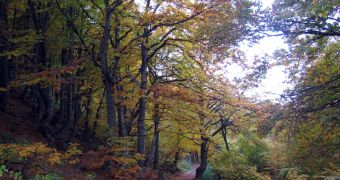Understanding Earth's carbon cycle is something researchers have been interested in accomplishing for a very long time, but many mysteries still remain, particularly when it comes to the role forests play in this process.
While we figure out how to best use trees and vegetation to store carbon, we should plant and harvest more trees to buy ourselves more time, scientists say.
This proposal was recently submitted by researchers Sebastiaan Luyssaert, who is based at the Laboratory for Climate Sciences and the Environment (LSCE) at the Atomic and Alternative Energy Commission (CEA), and Valentin Bellassen, from the Centre for Economics and Sociology in Rural Areas (CESAER), at the National Institute for Agronomic Research (INRA) in Dijon, France.
At this point, the international scientific community is divided on how to manage forests in order to increase their ability to capture and store carbon dioxide. While trees are known to absorb a lot of CO2, and thus contribute to mitigating global warming, they also provide an alternative fuel source to oil, coal, natural gas, concrete and steel.
The latest statistics estimate that forests have absorbed nearly 30 percent of all man-made CO2 emissions over the past few decades, which is roughly the same amount that the ocean stores yearly. This is the equivalent of 2 petagrams of CO2 annually, a mass equal to the global biomass of fish.
Recently, some studies have shown that one of the fundamental tenets of ecology, the Odum framework – which suggests that carbon flows inside forests are in equilibrium – may be wrong, by proving that unharvested forests can absorb more carbon than they release.
This discrepancy may occur due to the fact that mature forests create large-scale environmental changes around them, which violates a basic law of Odum's framework that assumes steady conditions in particular habitats or ecosystems.
Figuring out how these in-situ carbon sinks actually work in terms of carbon flow is the best possible way to go about deciding if we should cut down trees, or plant more of them. Climate change mitigation could be achieved both ways, but our current understanding of the CO2 cycle prevents us from figuring out which is most efficient.
This is why Luyssaert and Bellassen are proposing that we should both cut and plant trees as a way to stop global warming, at least until we figure out which method is best in the long-run, Nature News reports.

 14 DAY TRIAL //
14 DAY TRIAL //